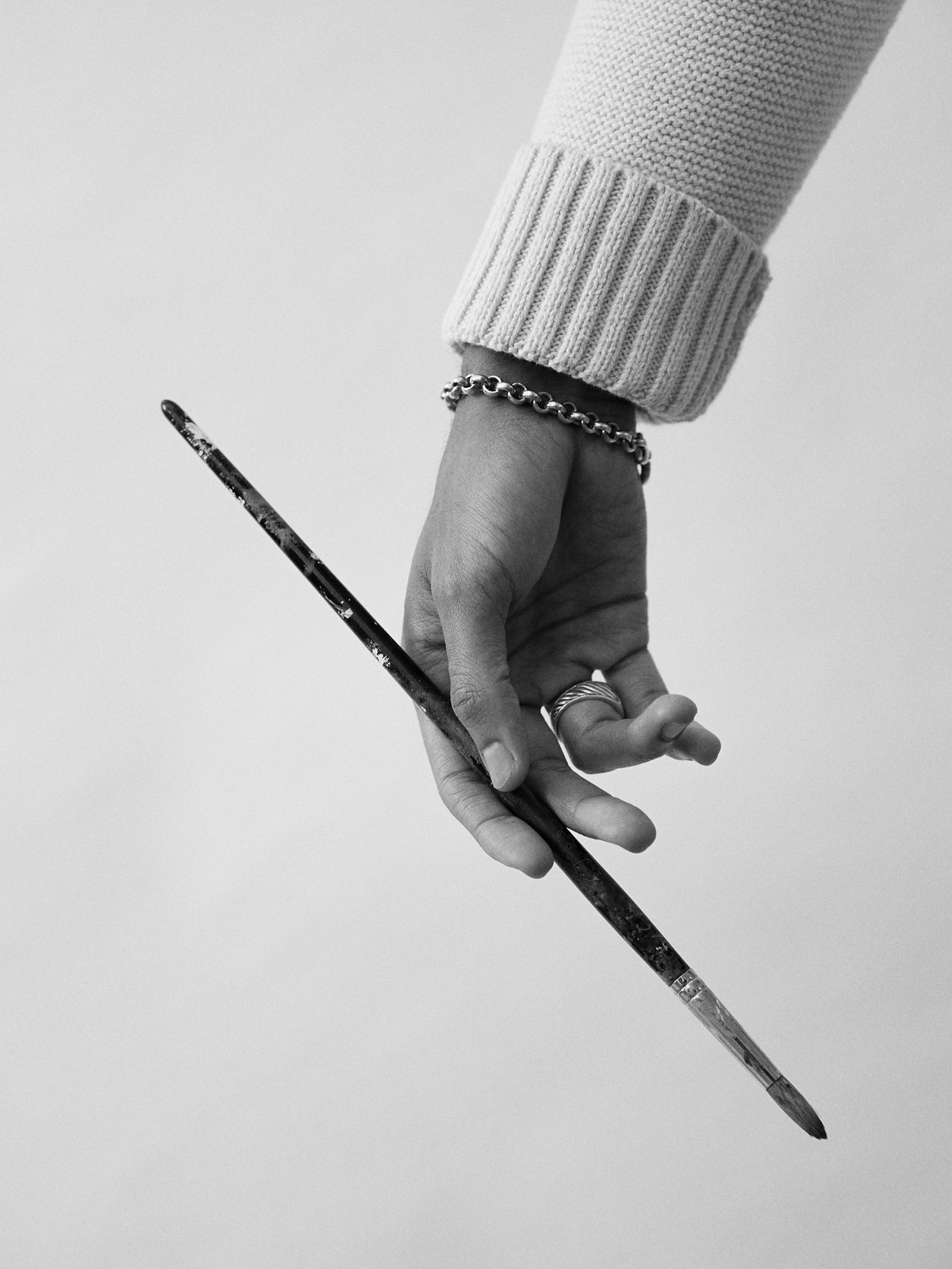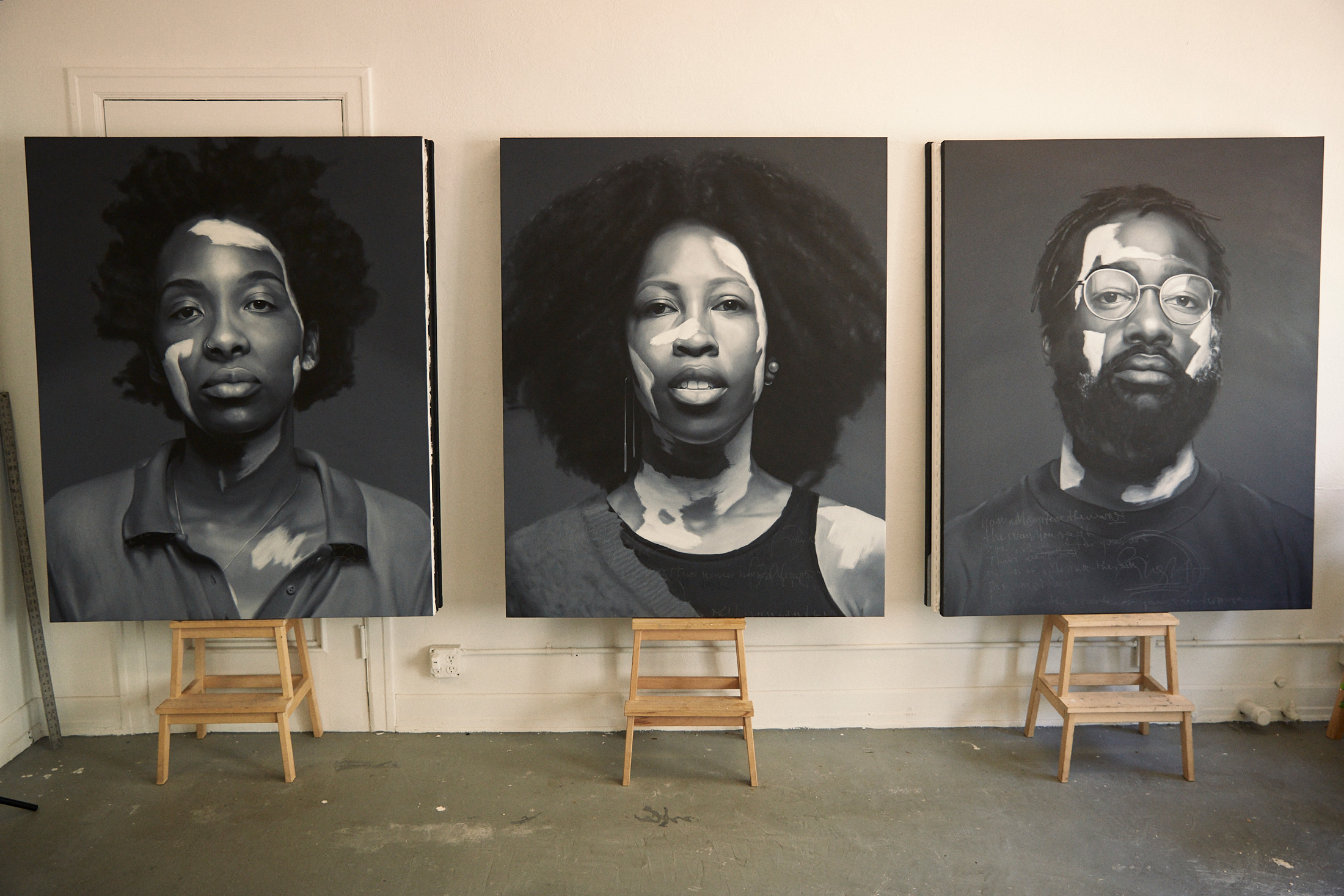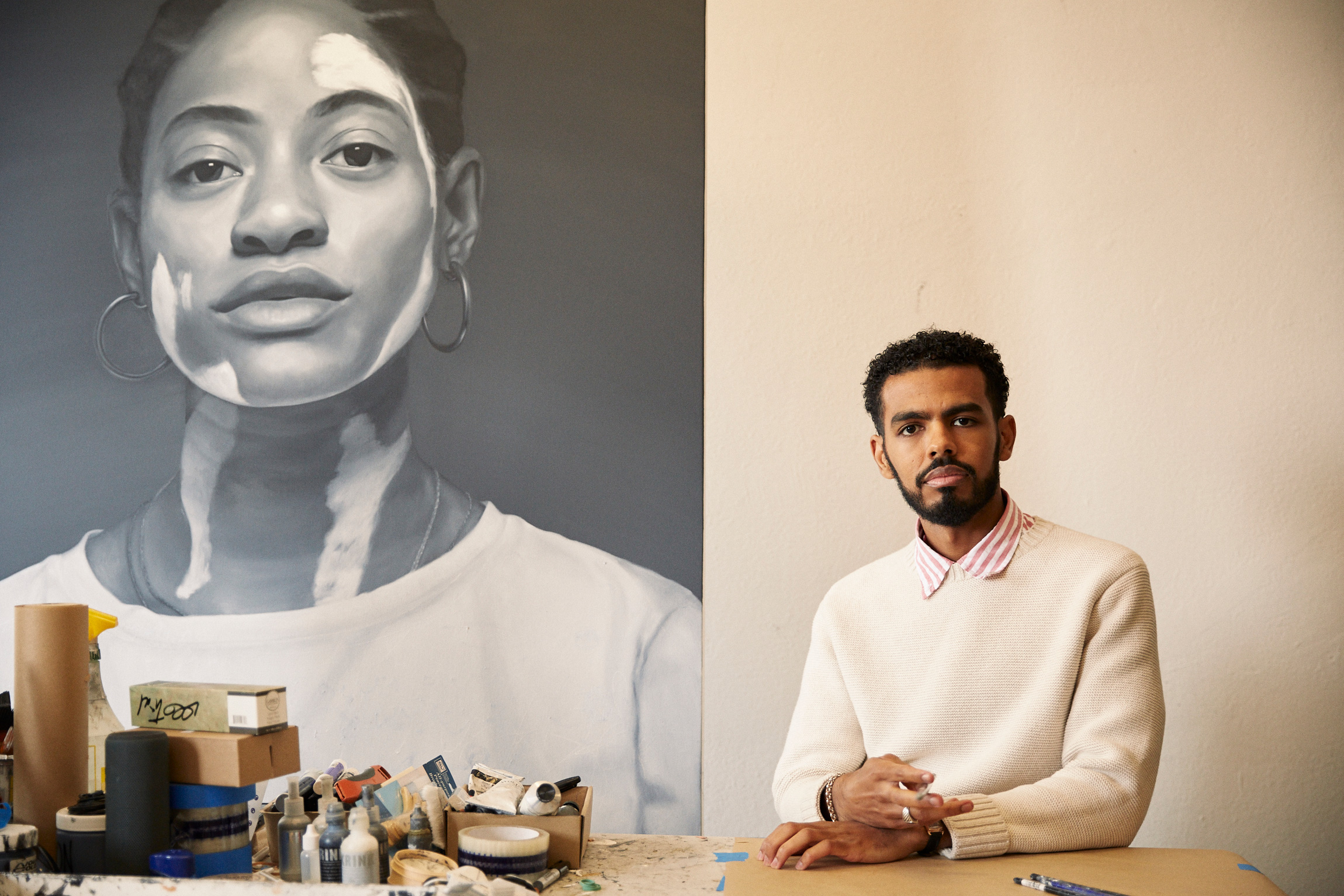Los Angeles has as many reputations as it does vibes. For one, it’s the entertainment capitol. To others, it’s a city of promise, made up of transplants, hailing from every corner of the world. There are also many people who see LA as a fake city, with fake people, trying to one up each other in the perpetual rat race of American society. Whatever your take, LA is a fascinating place, more of a collection of towns with distinct characters that contribute to the greater whole of the city. As a local Angelino myself, I can attest, with some bias of course, that LA is the quintessential city of the twenty-first century. Far past its image of celebrity, smog and freeways is a deeply cultural hub where professionals of all walks converge in creating buzz that has garnered the attention of the world. So in that sense, for better or worse, LA is nothing more than a microcosm of the American Dream itself.
Take a stroll down Hollywood Boulevard and it’s easy to miss all that — lost in the influx of tourists, stars and bootleg gift shops. But overlooking the energy of the high street, I walk up to the studio of artist, Kohshin Finley. Immediately, you’re fixed on the massive canvases that adorn the walls — portraits of people woven together by the grayscale palette Finley chooses to paint in. Friends, colleagues, creatives — everyday folk that Finley invites into his studio for a chat, then begins to translate these conversations into poems and paintings that reflect the power of the ever-changing landscape that has come to typify LA and the everyday people shaping this city.

LA-native?
Born and raised.
Nice, me too. What parts?
All over. I grew up in South Central, which is where I was born. Then I went to West LA for middle school and high school, then Otis. Now here in Hollywood — so all over.
Are there certain things about growing up here that resonate with you as an artist?
Great question — I think there are, because you can go a block and see a completely different neighborhood. I believe that adds so much energy to the city. As an artist being able to walk and feel it. Being able to have my studio in Hollywood, and the space inside is pretty chill but you walk outside and it’s on. The energy is there, whether it’s tourists or natives, whatever it is.
Was that something you were looking for when searching for a space?
I just needed a space haha. When I was looking for a studio, I wanted to find a spot that I could make the work in and didn’t have to break my back to pay rent on. I landed here from Craigslist and this is like my home. I couldn’t have imagined a better studio space. It ended up being exactly what I needed and I’ve been here three years now and you know, what you need consistently changes. It’s been perfect to grow with the space and make it however I need it to be.
What were some of the early marks you were making in college? Coming from an illustration background.
The work I was making then wasn’t really painting until my senior year. A lot of what I was doing before was figuring it out, you know? Copying people, seeing a style I like on tumblr, “Oh that’s cool, I like sign painting.” Sort of molding all these different things and interests. I was interested in everything and was influenced by everything creatively.
What was really influential I would say was a photo studio class — that’s where I learned to create my own references. So I wasn’t stealing out of a magazine or printing out something online. There’s an actual person here in front of me that I am friends with. I can photograph them and use them in a drawing or a painting. That was incredibly informative, because it allowed me one-hundred percent ownership, at an early age, of everything. I didn’t have to steal something from a person I’ve never met before. As an artist, being able to own your work — from top to bottom — that’s a pretty powerful thing.
As ethnic minorities, I’ve read you talk about the past as something always in our navigation of life and society. How do you address that in your art?
A lot of my experiences navigating life, as a person half-Black, half-Mexican, hasn’t been so defined in that way. For me, it’s a unique experience of my own. As is yours. Same as this other person down the street. So for me, that’s why I paint in grayscale, there is no assignment of ethnicity or skin color or nationalities, because we’re going to get that in the real world.
The world I am creating, reflecting my friends and peers who I care for, it’s creating them in a world in which it is this world — reflecting them as such — strong and defined individuals. There is no adjective in regards to color or where they were born or their parents’ roots. They’re strong and resilient people. That for me is the way I address it. There’s so much power when you wake up and see that. I wake up and say, “Hey, you’ve already been this, this is what you’ve been this whole time.” It’s this permission to see yourself and others in that lens.
…the lens that we should aspire to see the world in.
It’s wanting to also expand the conversation that someone who looks like this can have a conversation that is not always about color.
I read that you always start with a poem.
Yeah, each artwork has a poem integrated in it. The poems are my stream of consciousness writings about my friends and their time here in the studio. They’ll come in, just me and them, and just catch up; no questionnaire or anything. From there, I will actually apply the paint on them and work from the film negative.
Oh, I see.
Yeah, I shoot them on film. Then create the underdrawing and painting. Within the actual space of the painting themselves, the poems are in the middle, reflecting the time that they spent here with me in the studio.
So the white paint is real?
Yeah, it’s actually applied to them here. So for me, that’s a way to make it as real as possible. Not me making it up, but these moments of adversary we talk about and getting to the other side of it. I wanted to make that real, seeing as the paint dries. It adds to the atmosphere of the actual conversation.
I saw that you also spoke at The Broad for The Soul of a Nation exhibition. Can you tell me a little more about that?
Yeah, that was an amazing experience. My friend Jheanelle Brown, who is in the painting over there, she invited me to speak and give a walkthrough of the show. It was amazing — everyone was so present and attentive, I talked a lot about Barkley Hendricks’s work. It’s been great to see from that lens of dissecting the art. I wanted to show that no matter who you are walking into this museum, you are allowed to dissect the work from a purely visual perspective and analyze what you see.
Definitely, you don’t have to have a degree or certificate to talk about art or feel the work.
Exactly and you don’t have to have an M.F.A. in art or whatever. I’ve met so many people at art shows who don’t feel comfortable talking about it, because they don’t feel accepted in the space. I’ll ask them, “What did you think of the show?” And they’ll say, “Oh you know, I don’t really know much about art, so I can’t say much.” Which I’ll say, “But can you feel it? Do you have a response or do you like the colors,” all these things. You might like orange or you might hate orange, and this painting has orange. That’s at least something you can say and then you are already in the game.
Any reaction is an action.
100%. So that is how I gave my walkthrough of Soul of a Nation. I broke down Barkley’s work via his use of colors, shapes and visual pathways. The feedback was great.
Who else would you say, in terms of artists and musicians or even athletes or public figures, inspire you?
I’m really glad you asked, because no one asks about people other than artists haha.
…haha yeah influence is everywhere.
Everywhere — photographers and musicians are some of my biggest inspirations. Jon Brion, was my masterclass in story, but he did it through song. Being able to translate that in my work, at a very early age in college, listening to his work with Fiona Apple, Kanye West, Elliot Smith is so influential to this day — he’s a mastermind. Erik Tanner, a photographer out of New York is also really influential and a good friend of mine. My brother Delfin Finley, who is also a painter, is also a big inspiration of mine. He tells great, powerful stories.
Who are some of the peeps you’re listening to right now?
Let’s see, I’m all over the place. One day I’ll be listening to Playboi Carti and today I’ve been listening to Frank Sinatra and the gentle side of John Coltrane…
Yeah, the less philosophic side of Coltrane.
Yeah, a little of everything. Lupe Fiasco is still one of my favorite rappers of all-time. There’s this band called 79.5 who’s also amazing. Doing all that, then Nat King Cole, you know? Hahaha
Are you doing any exhibitions in the near future?
Yeah, I will be doing my solo exhibition this year, which you’ll see the paintings here in. When I lock down the date, I will share. Very excited for that, it’s been a long time coming for these works to be exhibited. This narrative and the relationships I’ve made through this work has been very transformative for my life. I can’t wait to share ‘em. I will also be showing at Jack Shainman, the school in Upstate New York, that will be phenomenal by curator Helen Molesworth, who is amazing and great human to talk to.
I’m starting to believe that we are all here to create something, as long as it doesn’t intrude on the livelihood of someone else.
Definitely.
It is so easy to get caught up in the nonstop grind of the American workweek.
It’s just me here in the studio, so you need someone to tell you sometimes to take a break — getting the permission to do that, it’s necessary. That’s the focus. A lot of what this world is, they want you to make stuff, nonstop. I’m fortunate to have my own studio and make work at my own pace.
Will this next show be in LA?
Yes, for sure. That’s incredibly important to me. Everyone in the paintings are in LA. A lot of them are creatives. I want everyone to see them in the show walking around, “Oh that’s them!” That kind of stuff, you don’t really get those type of experiences.
I’ve never been to a show like that.
It’s such a special experience. I had this one experience at CAAM (the California African American Museum), where I had a painting up this past June. I walked in on a random day and they were giving a tour to fourth and sixth graders. One of the guides recognized me and was like, “There’s the artist over there.” The kids just blew up and were like, “That’s an artist!? A real person?”
Haha like Picasso or some mythological being.
Haha yeah, so those moments really influence my work. Seeing that someone exists behind that painting or music. You hear someones music on Spotify and don’t see them unless specifically at a show. That is something I’m trying to celebrate in my work, but also be present by seeing other people.
Yeah and none of us will know how much of an impact that can have on any one person.
In that same show, I did a painting of my girlfriend and she had brought her nephew to the show. He comes in and is like, “What is Tata doing on the wall?” Then he understands it’s a painting and that his or your family can be the subject of this this big 5×6′ painting on the wall. Your family can be that, you can’t quantify the effect that can have.
Yeah and it’s like we’re so used to seeing celebrities, aristocrats, and religious figures in works of art for centuries, that it is refreshing to see everyday people. We’re able to attribute the same spirituality to real people.
Definitely and that is what this body of work is all about and why the paintings are so big. These are the giants, the statues.
The heroes.
You can’t quantify what people see in them or themselves by seeing these paintings. They’re immortal in that way.

And we’re not living in the eleventh century, who’s to tell me or you not to do that?
Right. That’s everything. Thinking about that weight of history. The people who were originally in paintings were rich and wanted to show off their wealth. Look how big my goblet is. Pope’s would have paintings commissioned and that’s how a lot painters got work.
Like the book, Ways of Seeing by John Berger.
That’s what inspires me — thinking about what happens when you think of Mona Lisa but painting someone who looks like us, which wasn’t a reality back then. You’re making history.
For more from Kohshin Finley, follow him on Instagram.
